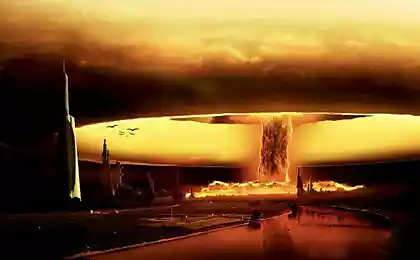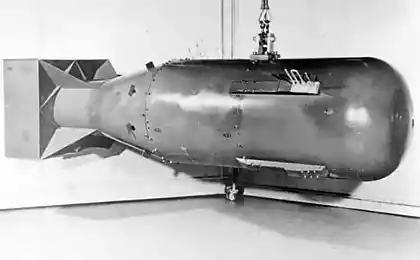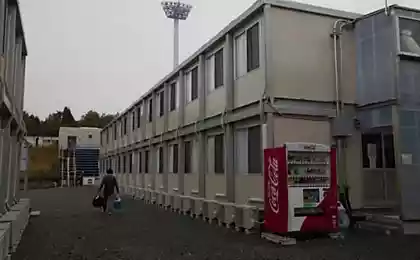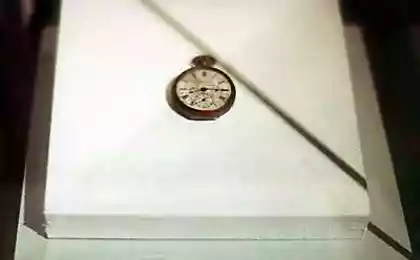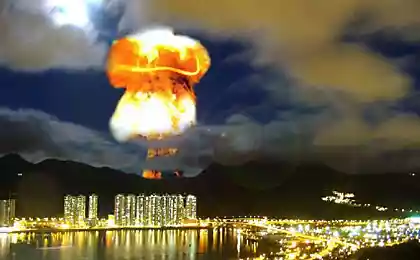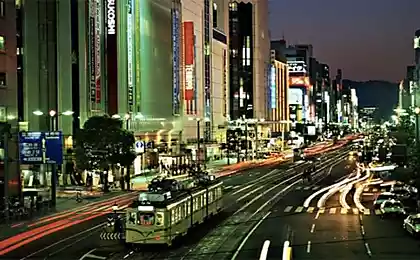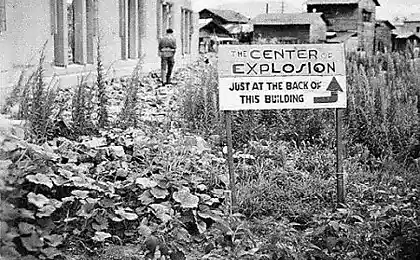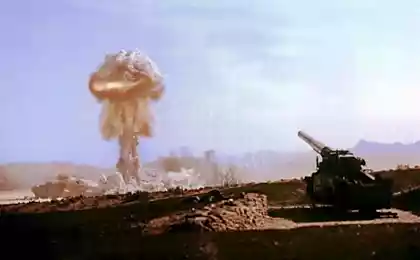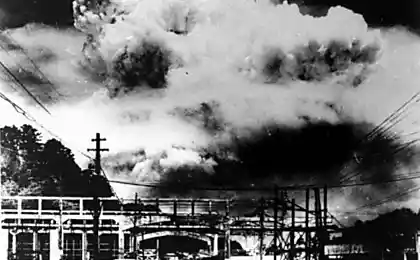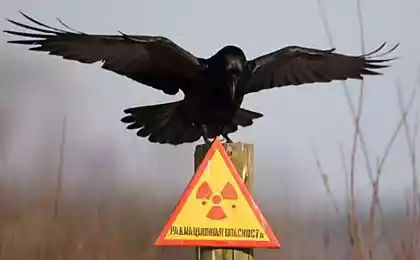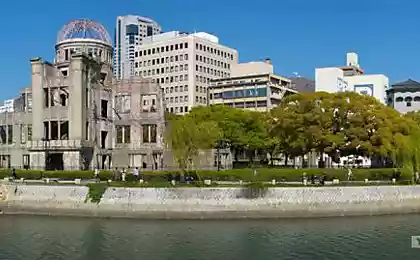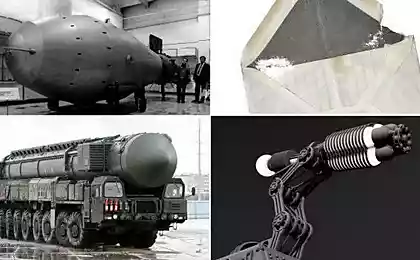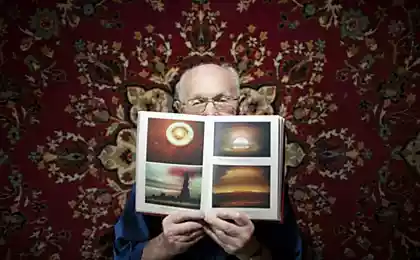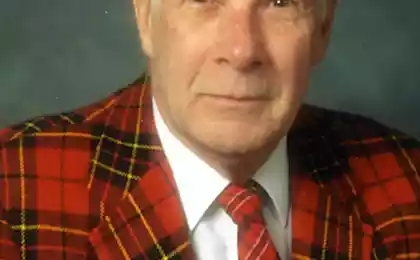1826
Hiroshima and Nagasaki - the effects of the atomic bomb (26 photos)
During World War II, August 6th, 1945 at 8:15 am US bomber B-29 "Enola Gay" was dropped an atomic bomb on Hiroshima, Japan. About 140 000 people were killed in the explosion and died in the following months. Three days later, when the United States dropped another atomic bomb on Nagasaki, killing about 80 000 people. Japan surrendered on Aug. 15, putting an end to this World War II.
So far, the bombing of Hiroshima and Nagasaki remains the only case of use of nuclear weapons in the history of mankind. The US government has decided to drop bombs, believing that this will accelerate the end of the war, and would not be necessary in the conduct of long bloody battles on the main island of Japan. Japan tried hard to control the two islands of Iwo Jima and Okinawa as the Allies approached.
These watches have been found among the ruins, we stopped at 8:15 am August 6, 1945 - at the time of the atomic bomb explosion in Hiroshima.
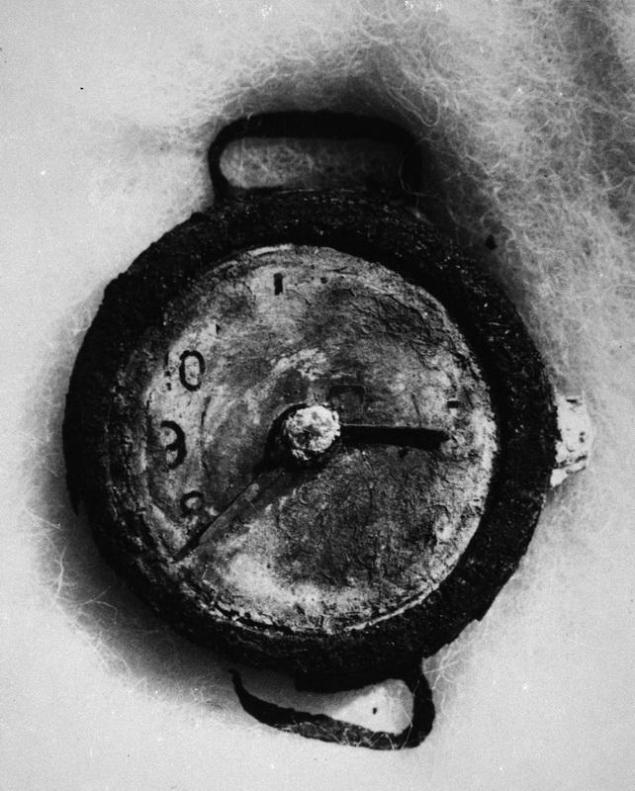
Flying Fortress "Enola Gay" landing 6 August 1945 based on the island of Tinian after the bombing of Hiroshima.

In this photo, which was published in 1960 by the US Government, embodied the atomic bomb "Little Boy» (Little Boy), which is August 6, 1945 was dropped on Hiroshima. The size of the bomb 73 cm in diameter, 3, 2 m in length. She weighed 4 tons, and the power of the explosion reached 20 000 tons of TNT.

In this photo provided by the US Air Force, ¬- core team B-29 bomber "Enola Gay", which was dropped on Hiroshima atomic bomb "Little Boy" August 6, 1945. The pilot Colonel Paul W. Taybbets is centered. Picture taken in the Mariana Islands. This was the first use of nuclear weapons during the war in the history of mankind.
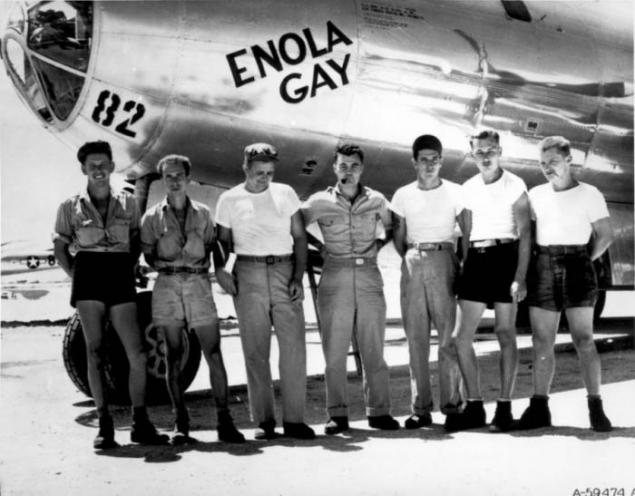
Smoke rises 20,000 feet above Hiroshima August 6, 1945 after being on her during the war atomic bomb was dropped.

In this photo taken on Aug. 6, 1945 from Yoshiura located on the other side of the mountains to the north of Hiroshima, seen smoke rising after the explosion of the atomic bomb in Hiroshima. The picture was taken by the Australian engineer from Kure, Japan. Stains left on the negative radiation, nearly destroyed the picture.

Survivors of the atomic bomb was first used in warfare August 6, 1945, awaiting medical care in Hiroshima, Japan. The blast at the same time killing 60,000 people and tens of thousands died later as a result of irradiation.
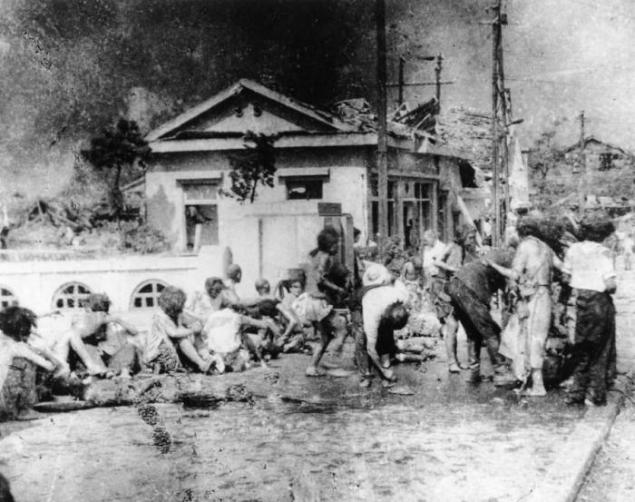
After the explosion of the atomic bomb on Aug. 6, 1945, in Hiroshima there were only ruins. Nuclear weapons were used in order to expedite the surrender of Japan, and completed the second world war, which US President Harry Truman had been ordered to use nuclear weapons capacity of 20 000 tons of TNT. Japan's surrender took place August 14, 1945.
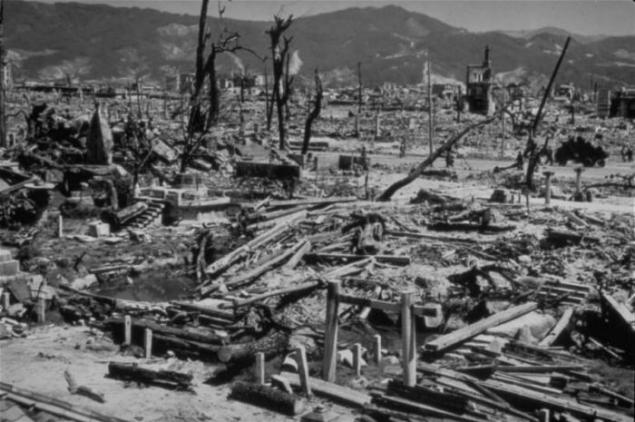
The skeleton of the building among the ruins of August 8, 1945, Hiroshima.
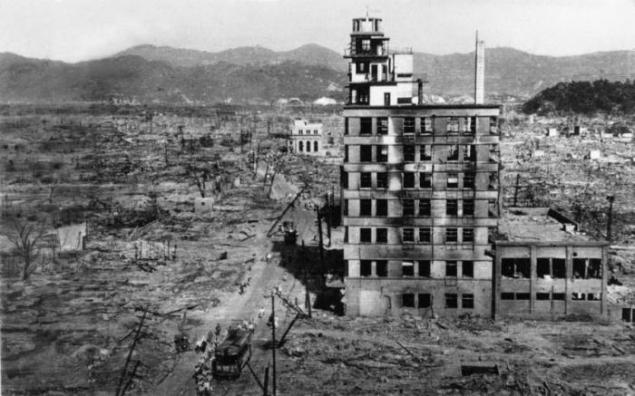
Crew members of the B-29 bomber «The Great Artiste», which dropped the atomic bomb on Nagasaki, surrounded by Major Charles W. Sweeney in North Quincy, Massachusetts. All crew members participated in the historic bombing. From left to right: Sergeant R. Gallagher, Chicago; Staff Sergeant AMShpitser, Bronx, NY; Captain S. D. Albury, Miami, Florida; Captain JF Van Pelt Junior., Oak Hill, West Virginia; Lieutenant F. Dzh.Olivi, Chicago; Staff Sergeant EK Buckley, Lisbon, Ohio; Sergeant ATDegart, Plainview, Texas, and Sergeant John. D. Kuharek, Columbus, Nebraska.
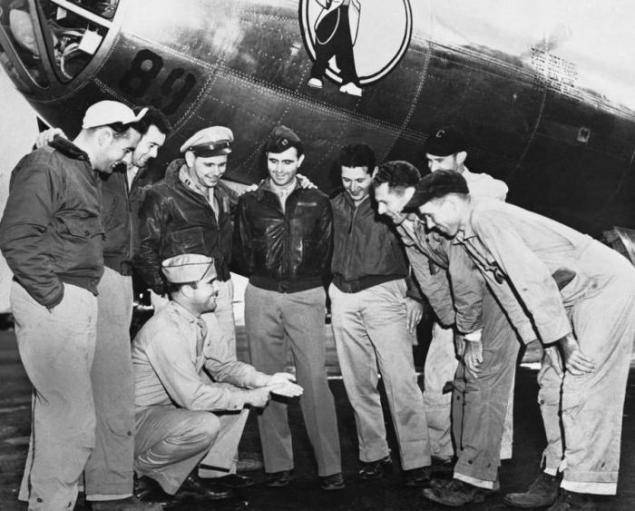
This picture of the atomic bomb that exploded over Nagasaki, Japan during World War II, was published by the Commission for Atomic Energy and the US Department of Defense in Washington on December 6, 1960. The bomb, "Fat Man» («Fat Man») has a length of 3, 25 m and a diameter of 1, 54 m, it weighed 4 to 6 tons. The power of the explosion reached about 20 kilotons of TNT.

A huge column of smoke rising into the air after the explosion of the second atomic bomb in the port city of Nagasaki on Aug. 9, 1945. The explosion of the bomb dropped bomber Air Force US Army B-29 Bockscar, immediately killed more than 70 thousand people, tens of thousands more died later as a result of irradiation.
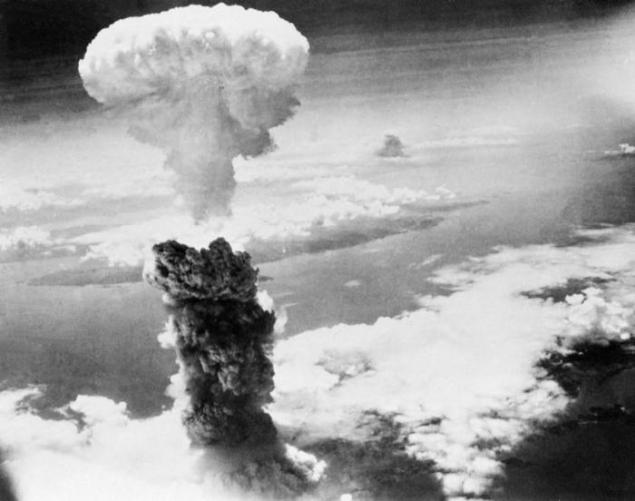
The boy bears on the back of his brother suffered burns, August 10, 1945 in Nagasaki, Japan. These photos are not made public by the Japanese side, but after the war they were shown to the world's media by employees of the United Nations.
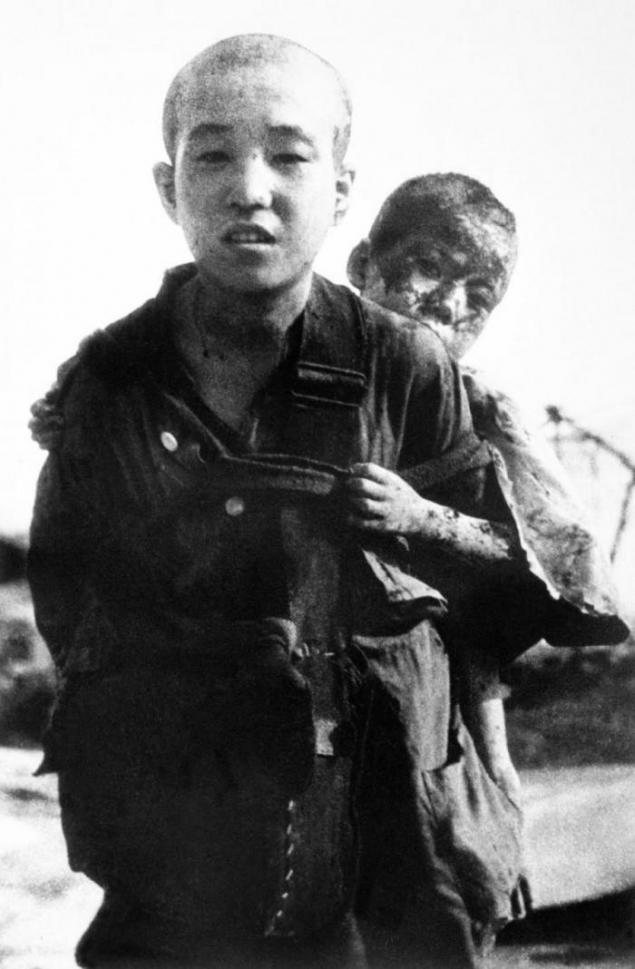
Japanese workers apart the rubble in the affected area in Nagasaki, an industrial city located in the south-west of the island of Kyushu, after it was dropped the atomic bomb on August 9. In the background is a chimney and a solitary building on the front - the ruins. The picture is taken from the archive of the Japanese news agency Domei.
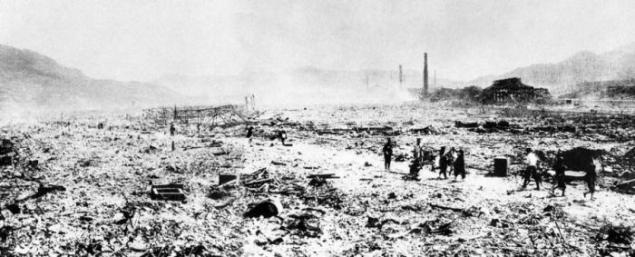
Mother and child are trying to live on. Photo taken August 10, 1945, the day after on the Nagasaki bomb was dropped.
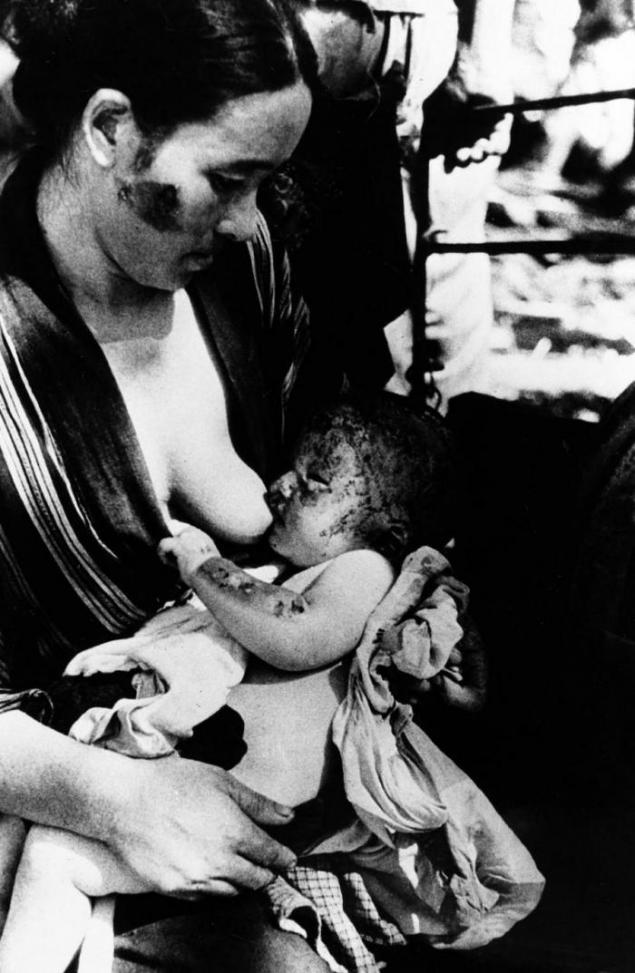
As seen in this photo, which was made on Sept. 5, 1945, several concrete and steel buildings and bridges remained intact after the United States dropped an atomic bomb on the Japanese city of Hiroshima during World War II.
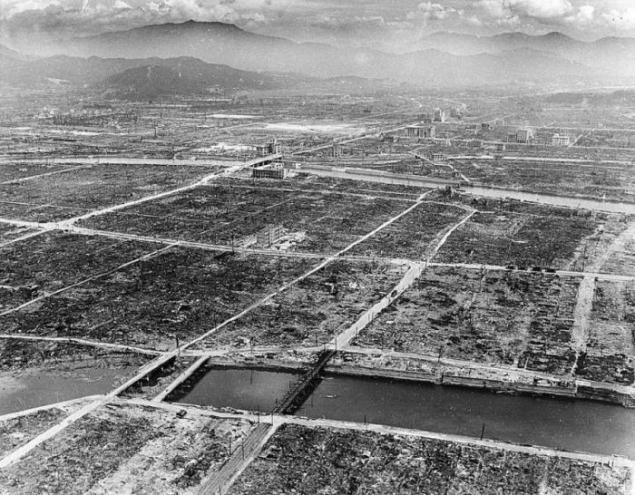
Most of the territory of Hiroshima was wiped out by the explosion of the atomic bomb. This is the first Aerophotographing after the explosion, made September 1, 1945.
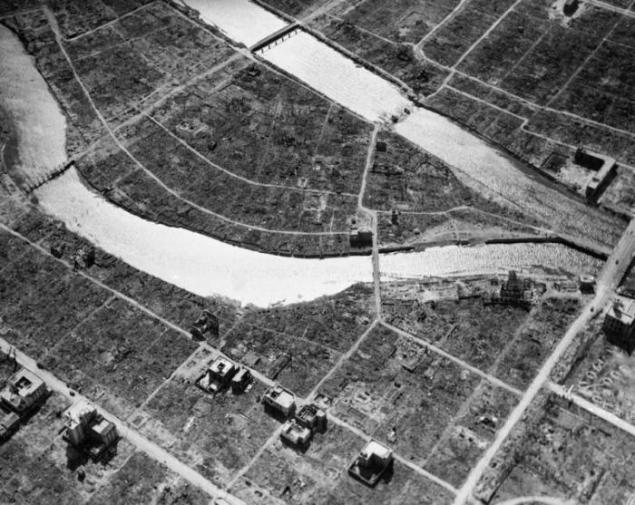
Reporter stands among the ruins before the skeleton of the building, which was the city's theater, in Hiroshima September 8, 1945, a month after the first atomic bomb was dropped by the United States to speed up the surrender of Japan.

Very few buildings left in devastated Hiroshima, a Japanese city that was razed to the ground by the explosion of the atomic bomb, as seen in this photo taken Sept. 8, 1945. (AP Photo)
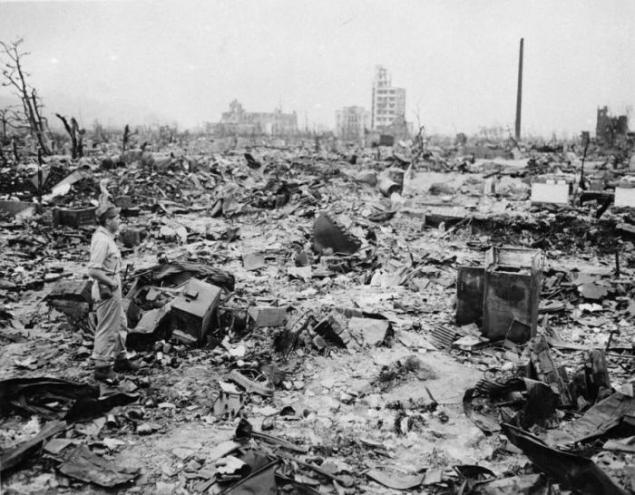
Tram (top center) and his passengers are dead after the bombing of Nagasaki on August 9. Photo taken on Sept. 1, 1945.
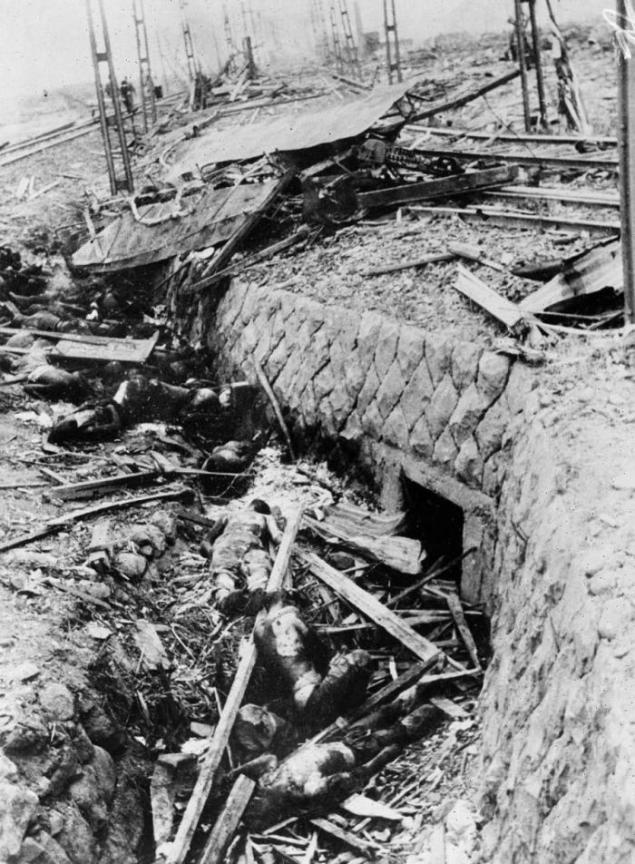
Catholic Urakami Cathedral in Nagasaki, photographed on Sept. 13, 1945, was destroyed by an atomic bomb.
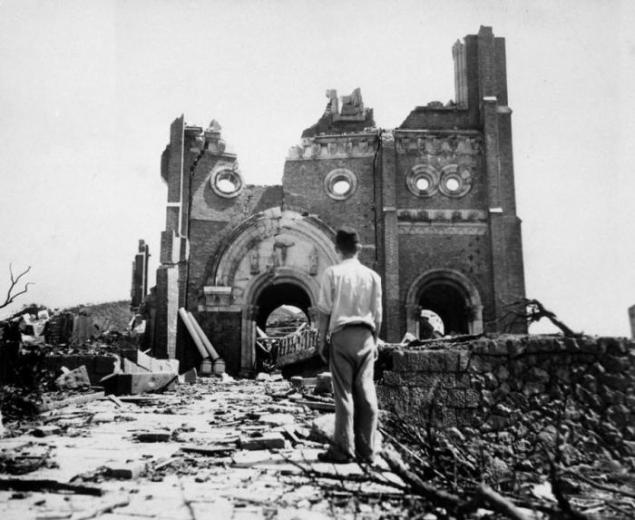
This area of Nagasaki was once built up with industrial buildings and small houses. In the background can be seen the ruins of the factory Mitsubishi and concrete school building, located at the foot of the hill.
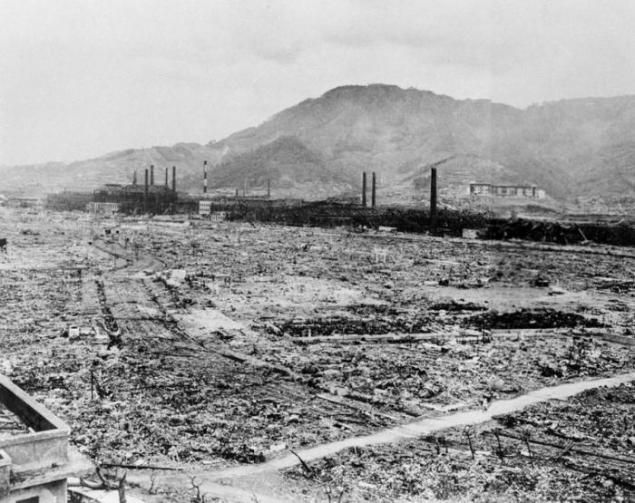
The top image shows the vibrant city of Nagasaki before the explosion, and at the bottom - a wasteland after the explosion of the atomic bomb. Circles, measure the distance from the point of explosion.
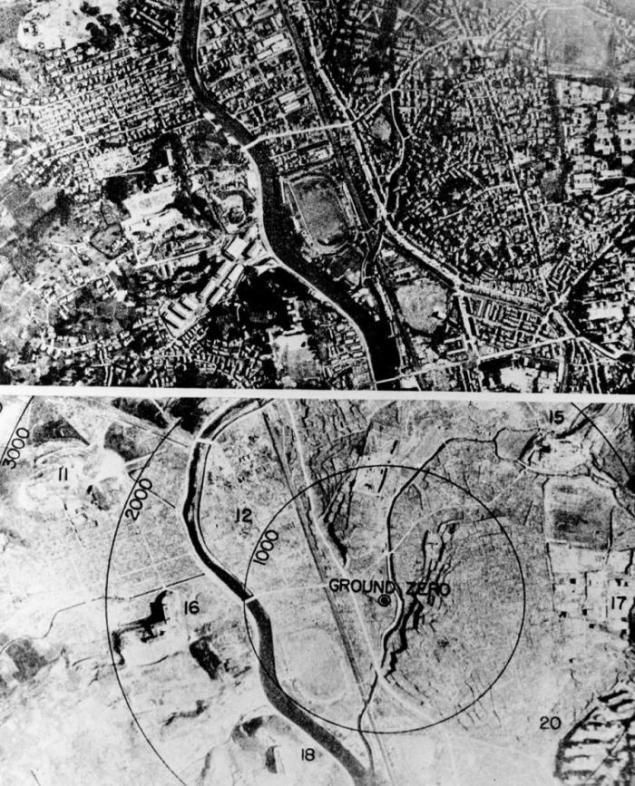
Sacred torii gate at the entrance completely destroyed Shinto shrine in Nagasaki in October 1945.
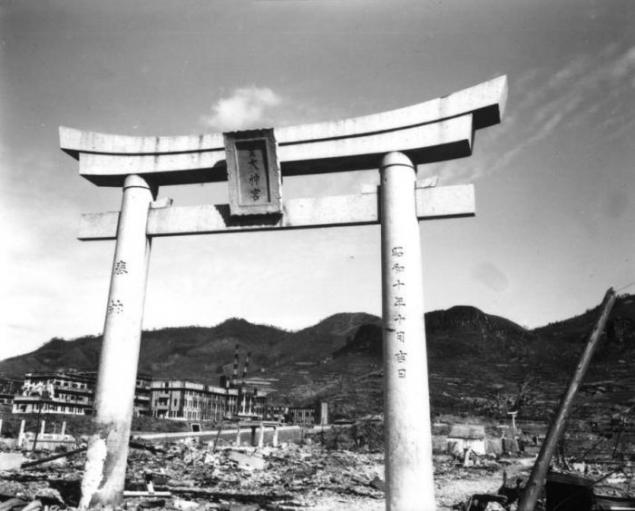
Ikimi Kikkawa shows his keloid scars left after treatment of burns received during the atomic bomb explosion in Hiroshima at the end of the Second World War. The photo was taken at the hospital of the Red Cross, June 5, 1947.
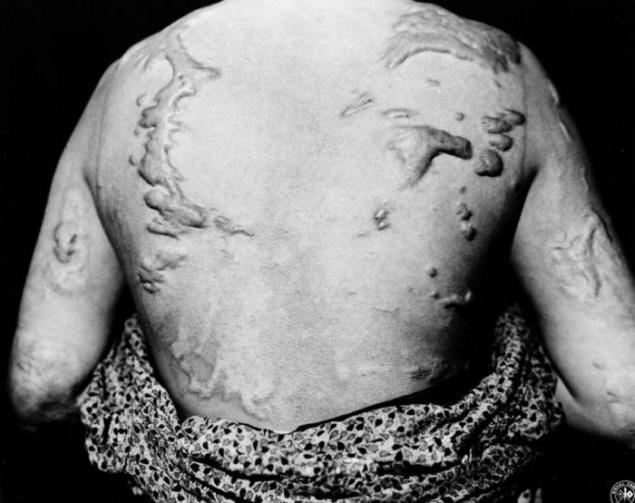
The pilot Colonel Paul W. Taybbets waving from the cockpit of his bomber at the base, located on the island of Tinian, August 6, 1945, before the flight, which aimed to reset the first in the history of the atomic bomb on Hiroshima, Japan. The day before, I called Tibbets flying fortress B-29 "Enola Gay" after his mother.
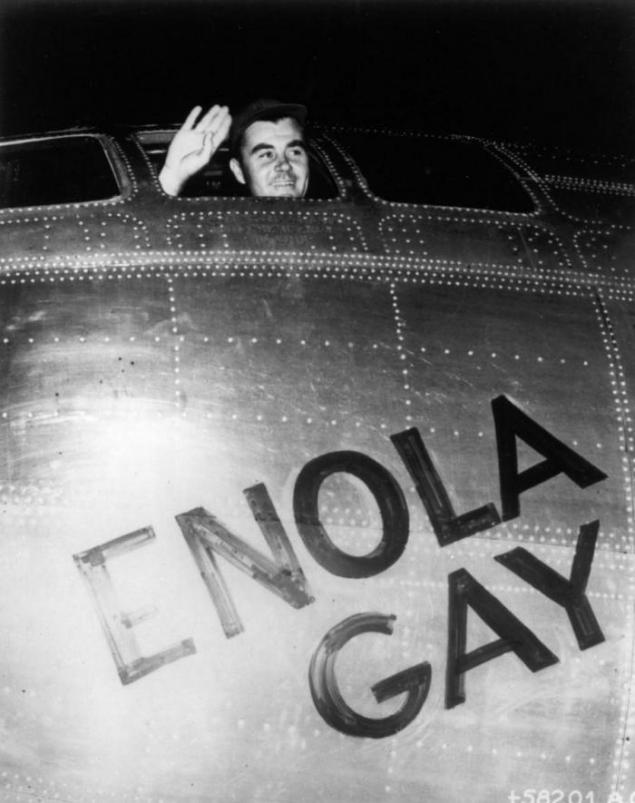
So far, the bombing of Hiroshima and Nagasaki remains the only case of use of nuclear weapons in the history of mankind. The US government has decided to drop bombs, believing that this will accelerate the end of the war, and would not be necessary in the conduct of long bloody battles on the main island of Japan. Japan tried hard to control the two islands of Iwo Jima and Okinawa as the Allies approached.
These watches have been found among the ruins, we stopped at 8:15 am August 6, 1945 - at the time of the atomic bomb explosion in Hiroshima.

Flying Fortress "Enola Gay" landing 6 August 1945 based on the island of Tinian after the bombing of Hiroshima.

In this photo, which was published in 1960 by the US Government, embodied the atomic bomb "Little Boy» (Little Boy), which is August 6, 1945 was dropped on Hiroshima. The size of the bomb 73 cm in diameter, 3, 2 m in length. She weighed 4 tons, and the power of the explosion reached 20 000 tons of TNT.

In this photo provided by the US Air Force, ¬- core team B-29 bomber "Enola Gay", which was dropped on Hiroshima atomic bomb "Little Boy" August 6, 1945. The pilot Colonel Paul W. Taybbets is centered. Picture taken in the Mariana Islands. This was the first use of nuclear weapons during the war in the history of mankind.

Smoke rises 20,000 feet above Hiroshima August 6, 1945 after being on her during the war atomic bomb was dropped.

In this photo taken on Aug. 6, 1945 from Yoshiura located on the other side of the mountains to the north of Hiroshima, seen smoke rising after the explosion of the atomic bomb in Hiroshima. The picture was taken by the Australian engineer from Kure, Japan. Stains left on the negative radiation, nearly destroyed the picture.

Survivors of the atomic bomb was first used in warfare August 6, 1945, awaiting medical care in Hiroshima, Japan. The blast at the same time killing 60,000 people and tens of thousands died later as a result of irradiation.

After the explosion of the atomic bomb on Aug. 6, 1945, in Hiroshima there were only ruins. Nuclear weapons were used in order to expedite the surrender of Japan, and completed the second world war, which US President Harry Truman had been ordered to use nuclear weapons capacity of 20 000 tons of TNT. Japan's surrender took place August 14, 1945.

The skeleton of the building among the ruins of August 8, 1945, Hiroshima.

Crew members of the B-29 bomber «The Great Artiste», which dropped the atomic bomb on Nagasaki, surrounded by Major Charles W. Sweeney in North Quincy, Massachusetts. All crew members participated in the historic bombing. From left to right: Sergeant R. Gallagher, Chicago; Staff Sergeant AMShpitser, Bronx, NY; Captain S. D. Albury, Miami, Florida; Captain JF Van Pelt Junior., Oak Hill, West Virginia; Lieutenant F. Dzh.Olivi, Chicago; Staff Sergeant EK Buckley, Lisbon, Ohio; Sergeant ATDegart, Plainview, Texas, and Sergeant John. D. Kuharek, Columbus, Nebraska.

This picture of the atomic bomb that exploded over Nagasaki, Japan during World War II, was published by the Commission for Atomic Energy and the US Department of Defense in Washington on December 6, 1960. The bomb, "Fat Man» («Fat Man») has a length of 3, 25 m and a diameter of 1, 54 m, it weighed 4 to 6 tons. The power of the explosion reached about 20 kilotons of TNT.

A huge column of smoke rising into the air after the explosion of the second atomic bomb in the port city of Nagasaki on Aug. 9, 1945. The explosion of the bomb dropped bomber Air Force US Army B-29 Bockscar, immediately killed more than 70 thousand people, tens of thousands more died later as a result of irradiation.

The boy bears on the back of his brother suffered burns, August 10, 1945 in Nagasaki, Japan. These photos are not made public by the Japanese side, but after the war they were shown to the world's media by employees of the United Nations.

Japanese workers apart the rubble in the affected area in Nagasaki, an industrial city located in the south-west of the island of Kyushu, after it was dropped the atomic bomb on August 9. In the background is a chimney and a solitary building on the front - the ruins. The picture is taken from the archive of the Japanese news agency Domei.

Mother and child are trying to live on. Photo taken August 10, 1945, the day after on the Nagasaki bomb was dropped.

As seen in this photo, which was made on Sept. 5, 1945, several concrete and steel buildings and bridges remained intact after the United States dropped an atomic bomb on the Japanese city of Hiroshima during World War II.

Most of the territory of Hiroshima was wiped out by the explosion of the atomic bomb. This is the first Aerophotographing after the explosion, made September 1, 1945.

Reporter stands among the ruins before the skeleton of the building, which was the city's theater, in Hiroshima September 8, 1945, a month after the first atomic bomb was dropped by the United States to speed up the surrender of Japan.

Very few buildings left in devastated Hiroshima, a Japanese city that was razed to the ground by the explosion of the atomic bomb, as seen in this photo taken Sept. 8, 1945. (AP Photo)

Tram (top center) and his passengers are dead after the bombing of Nagasaki on August 9. Photo taken on Sept. 1, 1945.

Catholic Urakami Cathedral in Nagasaki, photographed on Sept. 13, 1945, was destroyed by an atomic bomb.

This area of Nagasaki was once built up with industrial buildings and small houses. In the background can be seen the ruins of the factory Mitsubishi and concrete school building, located at the foot of the hill.

The top image shows the vibrant city of Nagasaki before the explosion, and at the bottom - a wasteland after the explosion of the atomic bomb. Circles, measure the distance from the point of explosion.

Sacred torii gate at the entrance completely destroyed Shinto shrine in Nagasaki in October 1945.

Ikimi Kikkawa shows his keloid scars left after treatment of burns received during the atomic bomb explosion in Hiroshima at the end of the Second World War. The photo was taken at the hospital of the Red Cross, June 5, 1947.

The pilot Colonel Paul W. Taybbets waving from the cockpit of his bomber at the base, located on the island of Tinian, August 6, 1945, before the flight, which aimed to reset the first in the history of the atomic bomb on Hiroshima, Japan. The day before, I called Tibbets flying fortress B-29 "Enola Gay" after his mother.

